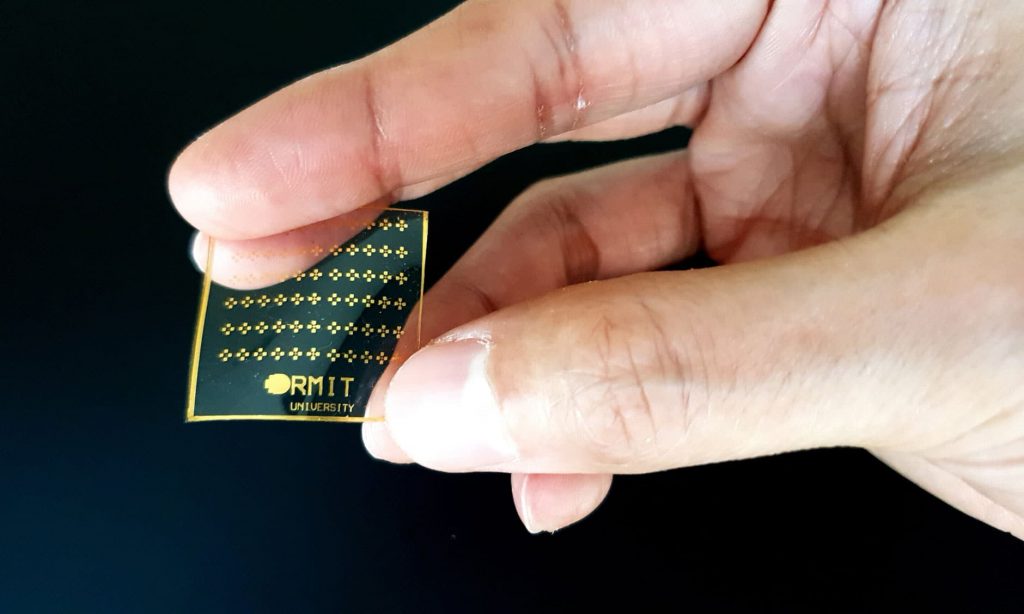If we list down the hierarchy of senses, we may find out that the sense of touch holds somewhat an essential and crucial place. It is always a swift response to our brains when we touch or hold something, and hence plays a significant role for us to restrain from hurting ourselves. For instance, if we have something cold in our hands, in no time, we get to know what it feels like. The same is with if we get poked by something sharp, our near-instantaneous impulses of the nervous system direct our brain to move away from that object.
A team of researchers from the Royal Melbourne Institute of Technology came up with this fantastic and crucial invention where the device can help the sensorily deprived people in transferring the information of touch from their skin to their brains.
Researchers created an artificial electronic skin that helps respond to pain for those who can’t feel the sense of touch. It lays the foundation of significant development in the field of smarter robotic applications and non-invasive alternate options to skin grafts.
The new creation in the area of medical performs just the way as sensory impulses are sent to the brain through nerve pathways at a lightning-fast speed.
In a statement from Madhu Bhaskaran, the lead researcher of the project, says that no electronic tech has ever been able to function as the sensation of pain before this specific invention.
The device in question lets its user respond to cold, hot, or sharp just as swift as our natural neural system does. To create the tech skin, developers and researchers used some stretchable electronics that can sense and also respond to temperature and pressure.
The device is named after what our body is called in the Greek language ‘Soma’ hence Somatosensors, meaning a sensing device for our bodies.

Ph.D. MD Ataur Rahman spoke with TechXplore and gave out some brief insight on this amazing and critically useful tech. “We’ve essentially created the first electronic Somatosensors replicating the key features of the body’s complex system of neurons, neural pathways, and receptors that drive our perception of sensory stimuli.”
The professor told that the earlier tech to mimic the pain could only do so in a mechanical sense by shooting signals in response to the varying levels of pain. In comparison, this novel creation is also able to trace out the reactions caused by varying temperatures.
This makes the device capable of distinguishing between a gentle touch with that of a painful one, increasing the sensitivity of response to touch. These critical and swift responses were not achieved with the relevant skins previously, hence will make Somatosensors stand out in the field of medical


